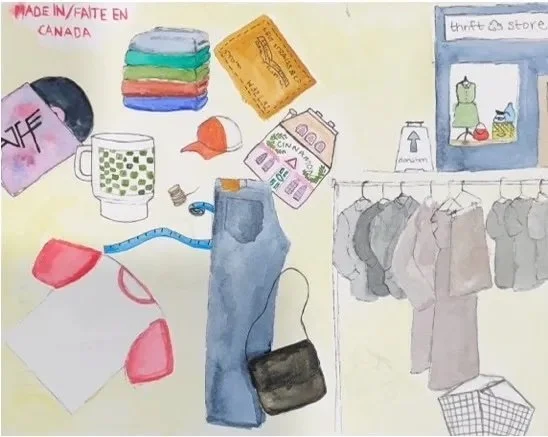thrifting 101: how to get started
Thrift vlogs and hauls have taken over your social feeds, but you're stuck finding old t-shirts from a highschools fundraiser two years ago. I'm going to be upfront with you- if you don't like a little bit of a hunt, you likely won't find thrifting enjoyable.
I enjoy thrifting because I love finding pieces that make my heart sing. The hunt is fun for me, hence why The Monday Project came to be (sort of). I get to create my own personal style sustainably.
Now, if you're used to conventional shopping in malls, or online, walking into your local thrift shop will probably be overwhelming. As a self-proclaimed seasoned thrift professional, here are my recommendations when you're starting your thrift journey-
Know what you're looking for. Scroll through your socials to get an idea of what you want to find (manifest that shit baby), and take screenshots from whatever social platform you find inspo on. I personally have a separate board on my Pinterest where I save items I'm currently on the hunt for
Give yourself a budget. Let's consider this more of a guideline. Especially when you're starting out, it's easy to fall into the excitement of the find and come out with over-consumption. If you're unsure what would be a good budget, look at some fast fashion sites for similar garments, and go from there.
Avoid for-profit stores. I recommend this for so many reasons. Obviously, they're for profit, and they get their donations for free. But partially as a result, their prices are far more expensive than your local non-profit. They have people to pay from corporate to the bottom line. Your local charity shops are most often volunteers.
Now that we've established the personal ground rules, we can get to the treasure.
Know what to look for. Nope, I promise I'm not repeating myself. You know what you're looking for, but now you need to know how to spot good finds. I'm not talking about brand names here either. How do you spot quality items?
Look for tags, stamps, branding, etc that might show an item number or date
If it says "Made in Canada" or "Made in the USA" your item is at least from the early 2000s if not older
Learn to make small repairs, and become a regular at your local tailor shop. It's important to keep an eye out for loose stitches, scratches, stains, and signs of wear to determine if any repairs are needed and if you're willing to overlook or repair any potential damages.
NEVER walk in and immediately grab a cart or a basket. This angers the thrift gods, and everyone needs a good superstition every so often
The most important thing to remember is patience. Learn to love the hunt, giggle at the fun finds, or questionable items that maybe shouldn't have come to be, and don't compare your finds to others.
Much love,
Maddie

